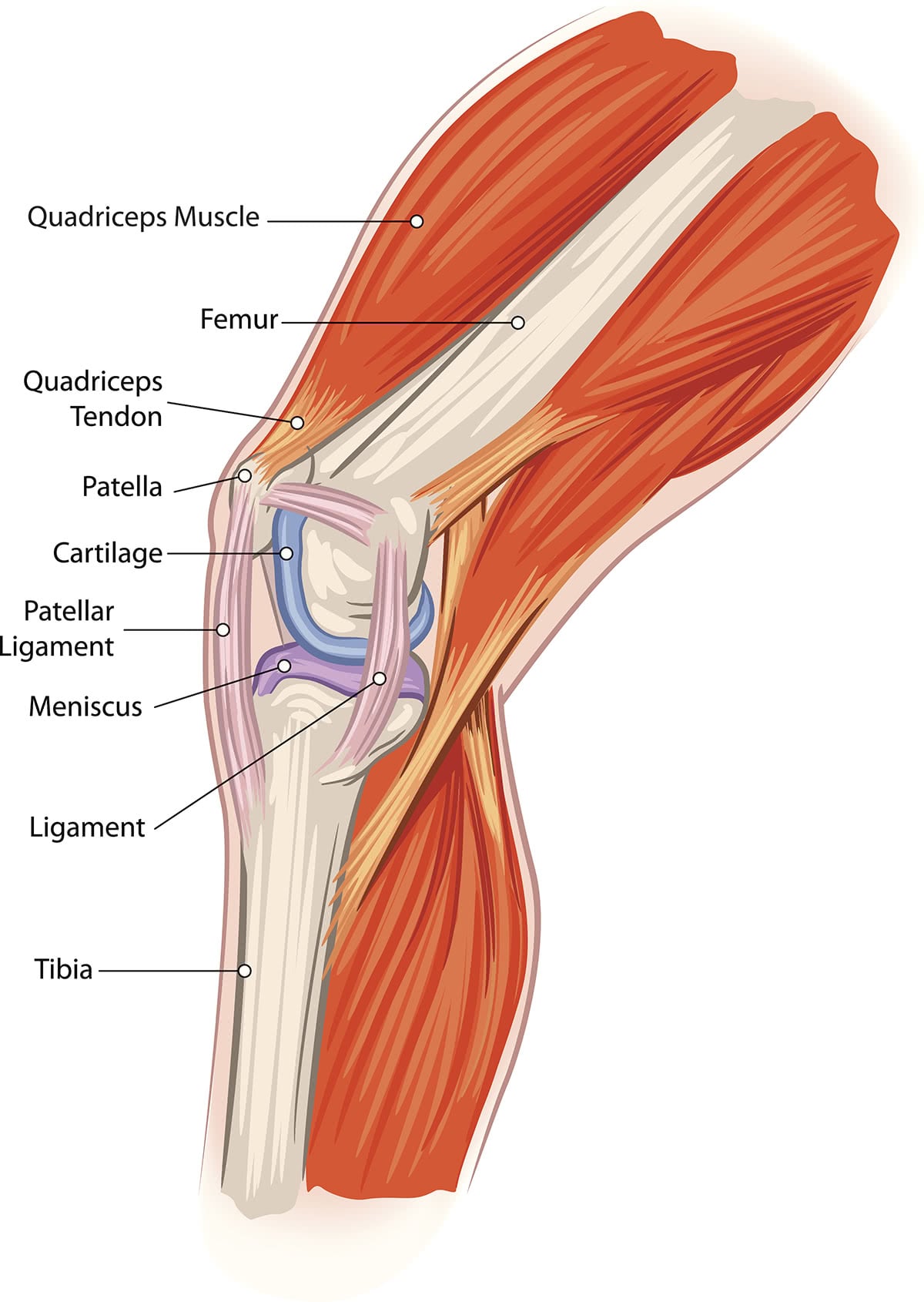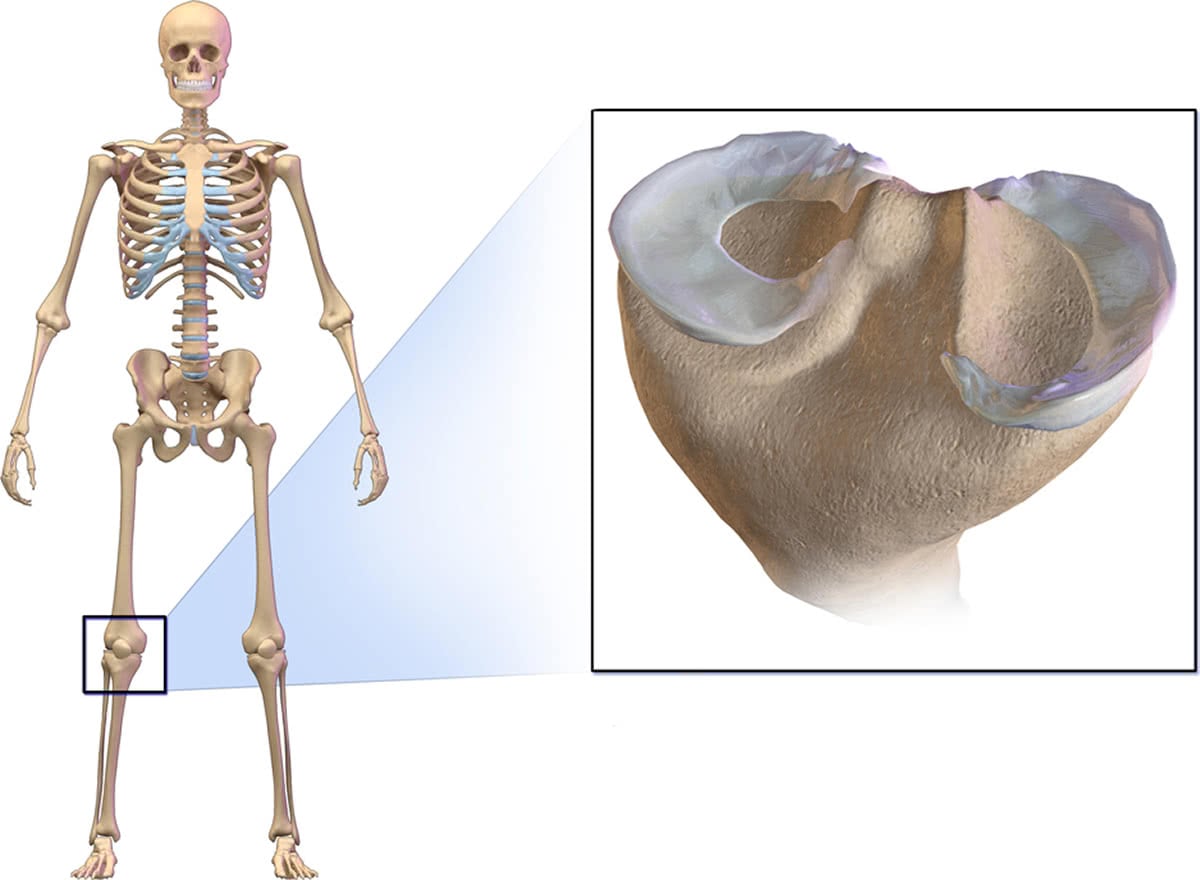Introduction
The medical term for each section of cartilage (or 'fibrocartilage') in your knee joint is 'meniscus', which is from the ancient Greek for 'crescent' - 'meniskos' - as this is roughly its shape. There are in fact two 'menisci' either side of the knee joint - the medial meniscus and the lateral meniscus - and they are situated between the femur (thigh bone) and the tibia (shin bone) to act as a cushion or shock absorber during activities such as jumping, running and walking and to maintain rotational stability.



Causes
A tear in a meniscus, a very common knee injury, can occur where there is...
- Trauma i.e. a forceful twist or rotation of the knee (common in sports, especially contact sports and other sports such as basketball and tennis where the player often pivots or stops and turns suddenly).
- Degeneration in the knee joint due to age, weight or arthritis of the knee.
Symptoms
Symptoms of a meniscal tear can vary, but generally include one or more of the following...
- Pain in the knee (especially when twisting the knee).
- Swelling of the knee.
- Stiffness in the knee.
- Difficulty walking.
- Difficulty in straightening the affected leg.
- Difficulty in performing certain movements, e.g. squatting.
- The knee joint 'locks up' or 'clicks' or 'pops'.
Tests / Diagnosis
Physical examination
Diagnosis of a meniscal tear can be made during a physical examination, where the doctor may for example observe you walking, ask you to do squats and / or move the affected knee into different positions as part of a test known as a McMurray test or McMurray circumduction test (a positive test is where there is pain or a click is felt or heard).
Other tests may be required to confirm the diagnosis...
X-Ray
A meniscal tear will not show up on an x-ray as it affects the cartilage not the bone, however an x-ray may be useful in assessing whether there are any other issues affecting the knee which may explain the symptoms.
MRI
An MRI (Magnetic Resonance Imaging) scan will confirm if there is a tear in a meniscus.
Arthroscopy
An arthroscopy is where a medical device (arthroscope), a tube about the width of a pencil equipped with a small camera and light, is inserted into the knee joint through a small incision to view the workings of the joint. In some cases, the surgeon can perform procedures during the arthroscopy, such as repairing or trimming a meniscal tear.
Related Information
Not all meniscal tears require surgery, in fact it is standard procedure to recommend physiotherapy for a period (generally around two weeks) before contemplating surgery.
If surgery is needed, it generally involves either the removal of a section of the meniscus (a 'resection') or a repair of a tear in the outer section of the meniscus. If untreated, a torn meniscus can lead to knee instability and a greater likelihood of developing osteoarthritis in the affected knee.
